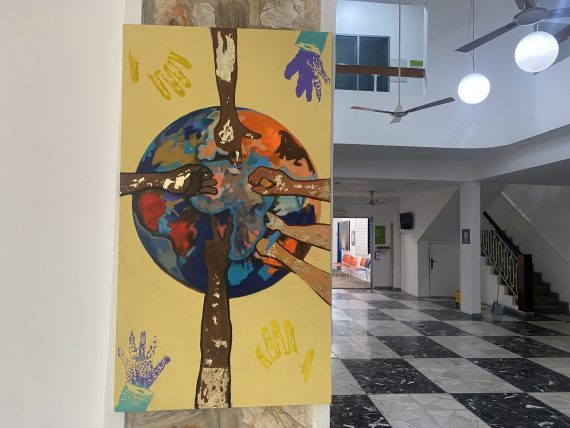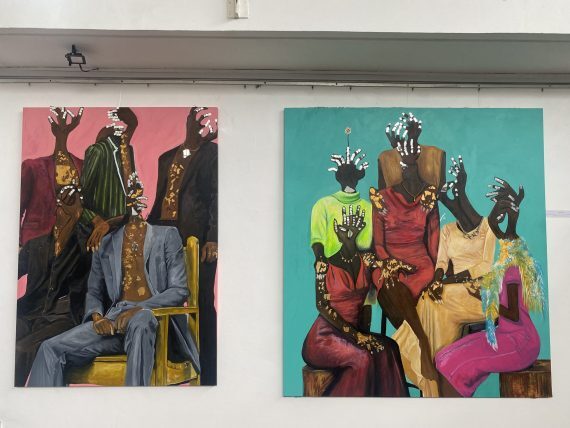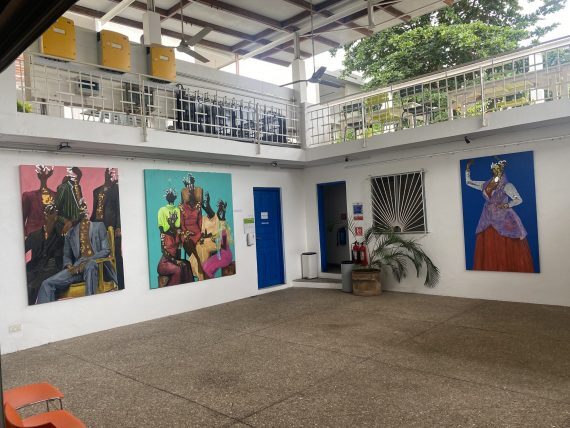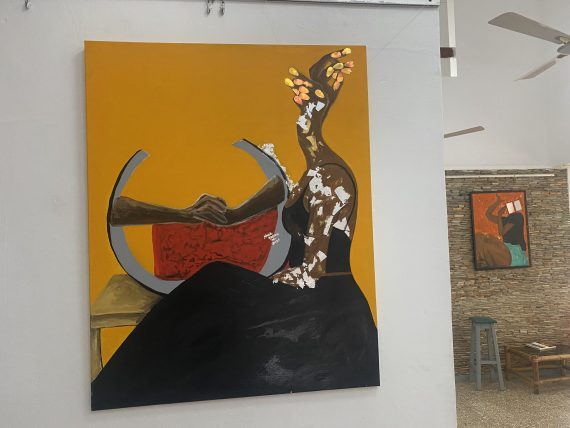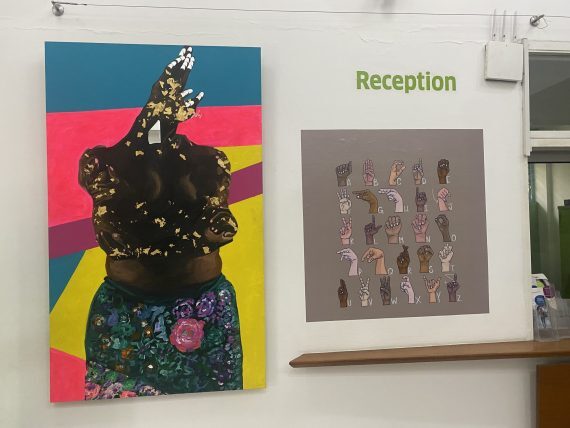Art – Prowess of the Human Hand in Sharp Focus
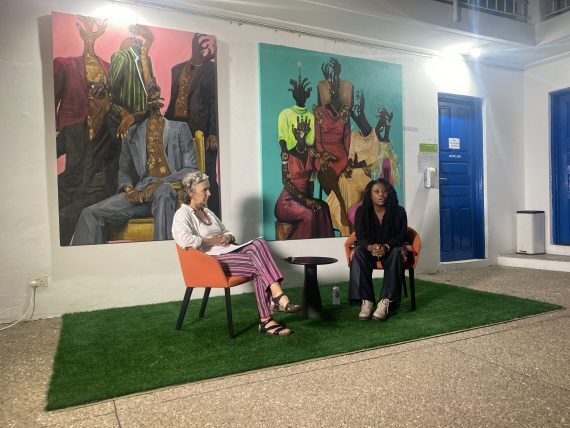
Young artist Nana Frema Amoabeng takes viewers on a journey that relates to the significance of the human hand
by John Owoo
Anatomy of the human hand is quite fascinating and complicated – indeed, it is composed of many different bones, muscles and ligaments – that allow for a large amount of movement and dexterity.
Consequently, losing it can result in numerous setbacks, a situation that nearly befell Ghanaian artist Nana Frema Amoabeng, whose paintings, which are currently on display at the Goethe-Institut, unwrap the human hand as a centerpiece.
She paints huge black human figures that vibrate with human hands as heads while incorporating pieces of mirrors, clothes and other reflective materials, which are embellished with necklaces and rings.
Characterized by uniform colorful backgrounds, the works reveal the fashion sense of Amoabeng as she adorns her figures with flamboyant clothes while exaggerating fingers that seem to perch perilously and realistically on the heads of her figures.
Undeniably, the human hand has been at the center of visual art history – not just as the main tool of creation – but also as an important focus of representation as well as painting details of delicate bones and cartilages of fingers.
Through surrealistic images, Amoabeng focused on the expressive possibilities of the hand not only to represent emotions, despair and disdain but also to subtly represent identities, conflict and collaboration since the hand needs other vital organs to function effectively.
Although, the artist employs hands largely due to her predicament, the symbolism of the hand is rich and varied. It equally represents benevolence, influence, faith, dynamism, work and divine grace / presence. Undeniably, hands are also capable of a wide variety of functions – touching, grasping, feeling, holding, manipulating and caressing among others. They are a vitally important part of who we are and how we see ourselves – and Amoabeng effectively employs it to tell us who she actually is.
Currently the coordinator of Women Art Institute Africa, Amoabeng, who was trained at the erstwhile Ghanatta College of Art (Accra), is an alumnus of CritLab, a project that empowers artists and has participated in the famous Chale Wote Street Art Festival, which takes place annually in Accra.
Goethe-Institut Ghana is sponsoring the exhibition, which ends on Wednesday November 30, 2022.
